Nuremberg is not only a big city, but also quite rural, especially on the outskirts of the city. This makes it an ideal place to discover the Knoblauchsland (garlic land) as a recreational area by bike.
If you don’t have your own bike, you can take advantage of VAG RAD, the bike rental service in Nuremberg. You can find bicycles at fixed rental stations throughout the city, which you can rent with the help of an app.
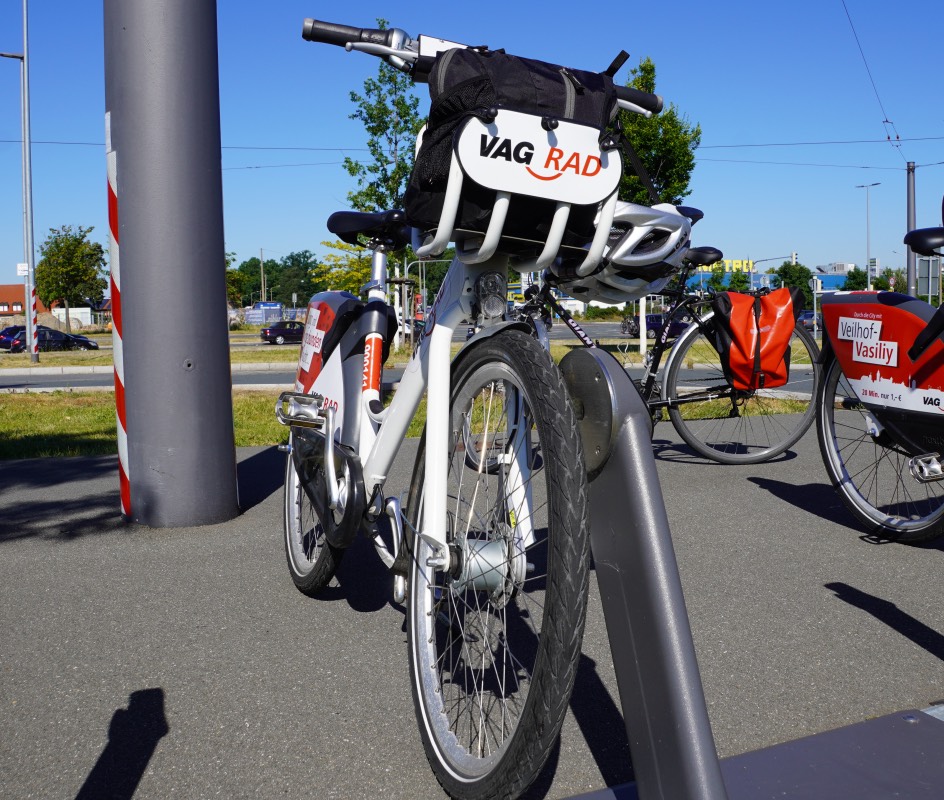
For our bike tour through Knoblauchsland, we took the S-Bahn to the tram station “Am Wegfeld”. There is a bike rental station there. A little tip: check in advance in the app whether bicycles are parked there. Otherwise, there are other rental stations at other tram stations not far away.
The Knoblauchsland is wonderful to discover by bike.
What is the Knoblauchsland?
In the middle of the Nuremberg-Fürth-Erlangen triangle lies one of the largest contiguous vegetable-growing areas in Germany. This area is called Knolauchsland.
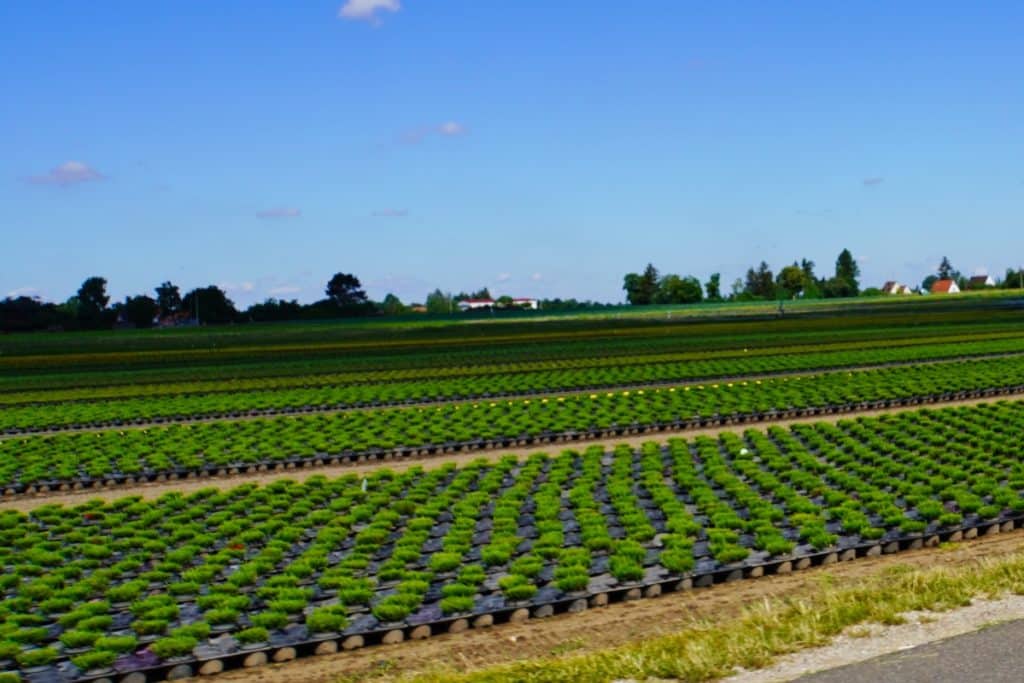
The development of the area dates back to the 8th century. With the founding of Nuremberg, additional smaller settlements were established in the 11th and 12th centuries, which were needed for the economic supply of the city. For many years there was an interrelationship between city and country. Nuremberg protected the region in times of war and need, which in turn supplied the city with vegetables.
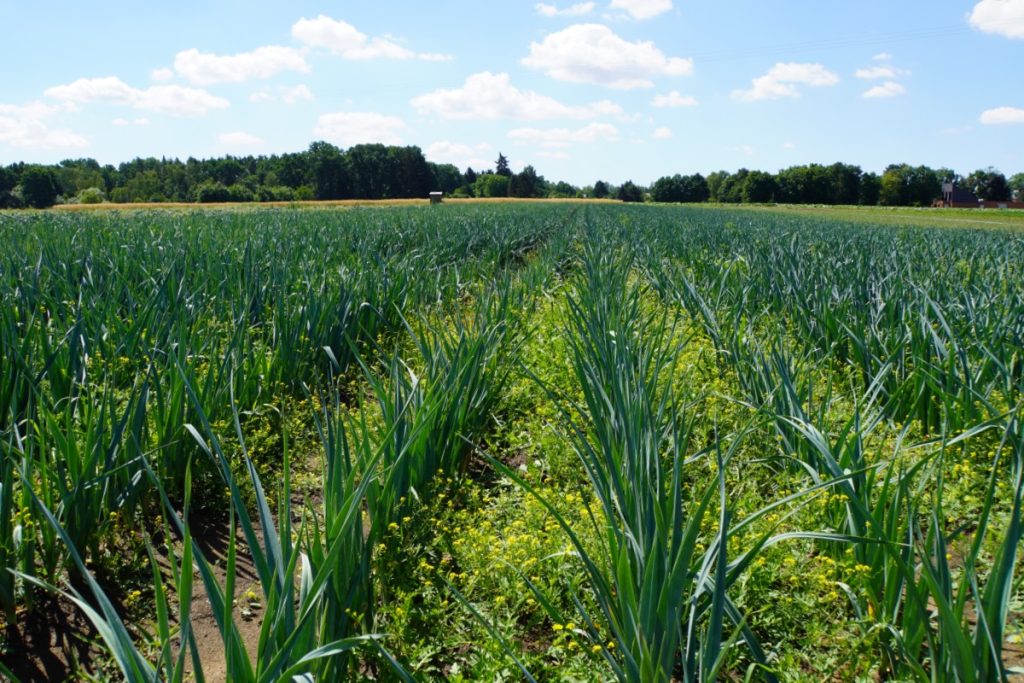
Today, the Knoblauchsland has an area of about 4000 hectares, but only about half of this is cultivated. There are about 130 vegetable farms in the region, which use about 900 hectares of cultivated land and grow, for example, potatoes, cabbage, kohlrabi, leeks, spinach, onions, various types of lettuce, etc. In addition, there is also land for growing flowers, tobacco, wheat and fruit. In addition, one can also find cultivation areas for flowers, tobacco, wheat and fruit. In addition to outdoor cultivation, crops are also grown in many greenhouses.
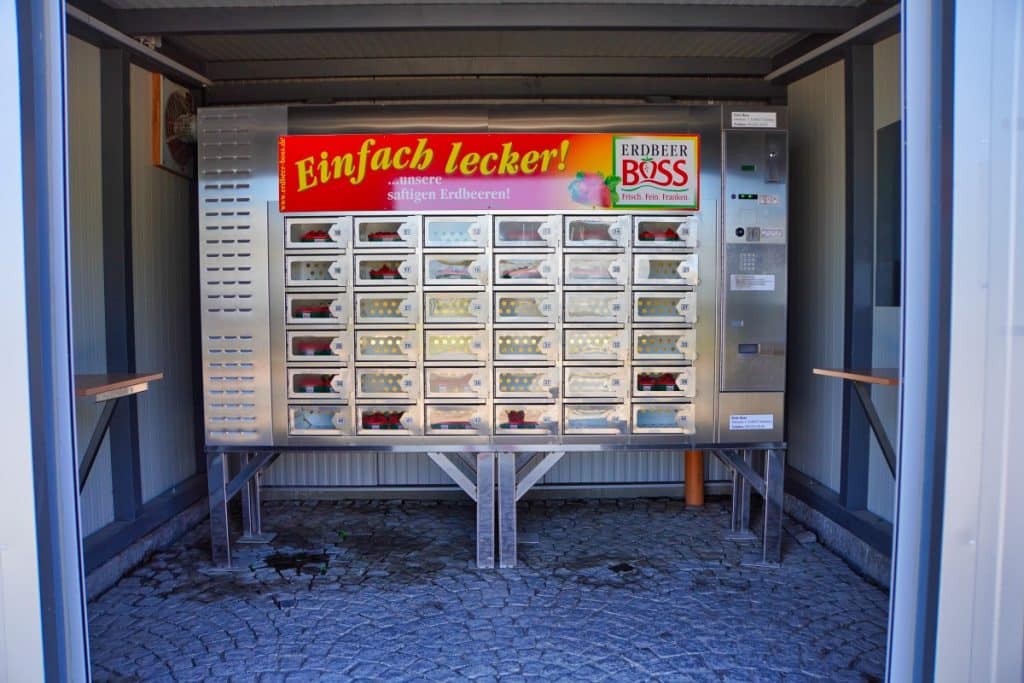
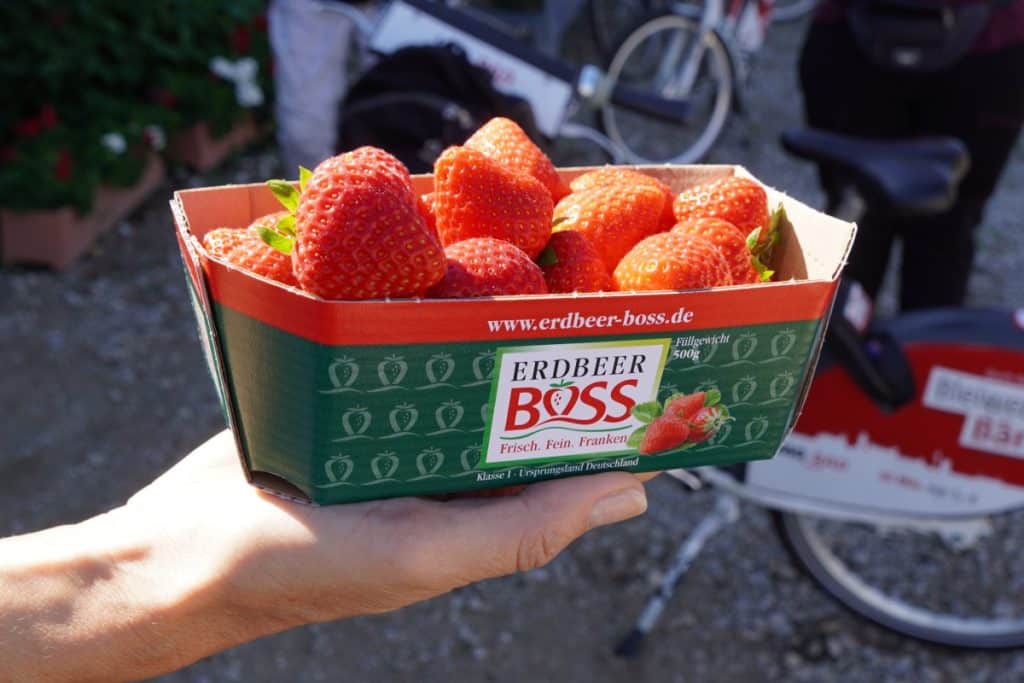
There is the possibility to buy freshly harvested produce at some farms. For example, we stopped at a strawberry farm with our bicycles. There is a vending machine where you can buy freshly harvested strawberries.
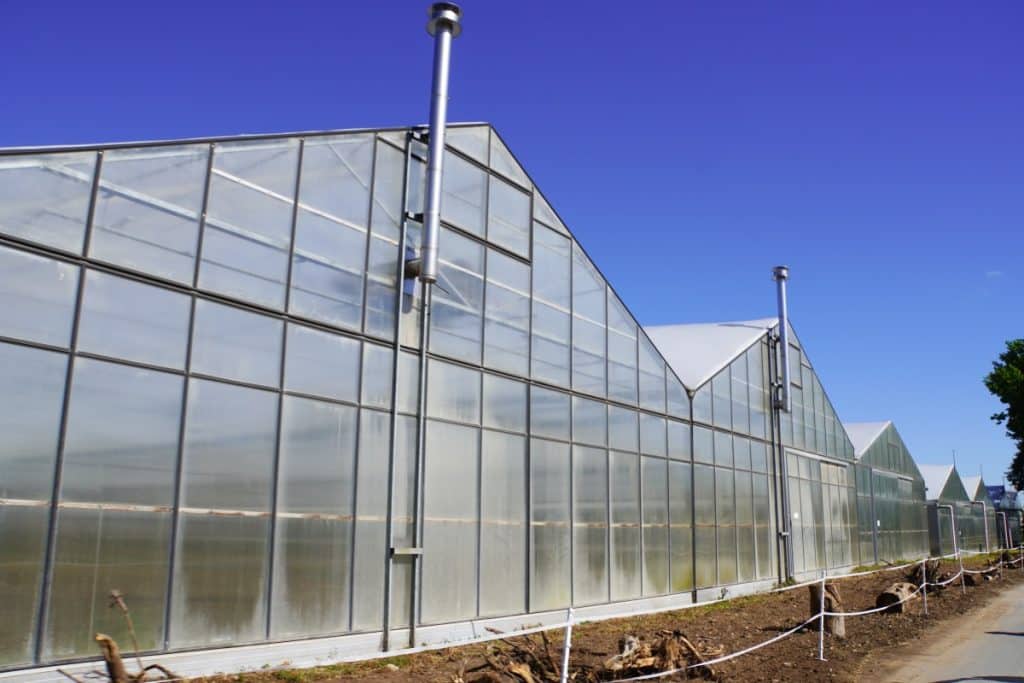
How did the Knoblauchsland get its name?
The first written records from the middle of the 14th century prove widespread cultivation of onions, cabbage and peas for this area. Garlic is explicitly mentioned in records from the 80s of the 14th century. This is where the name Knoblauchsland comes from.
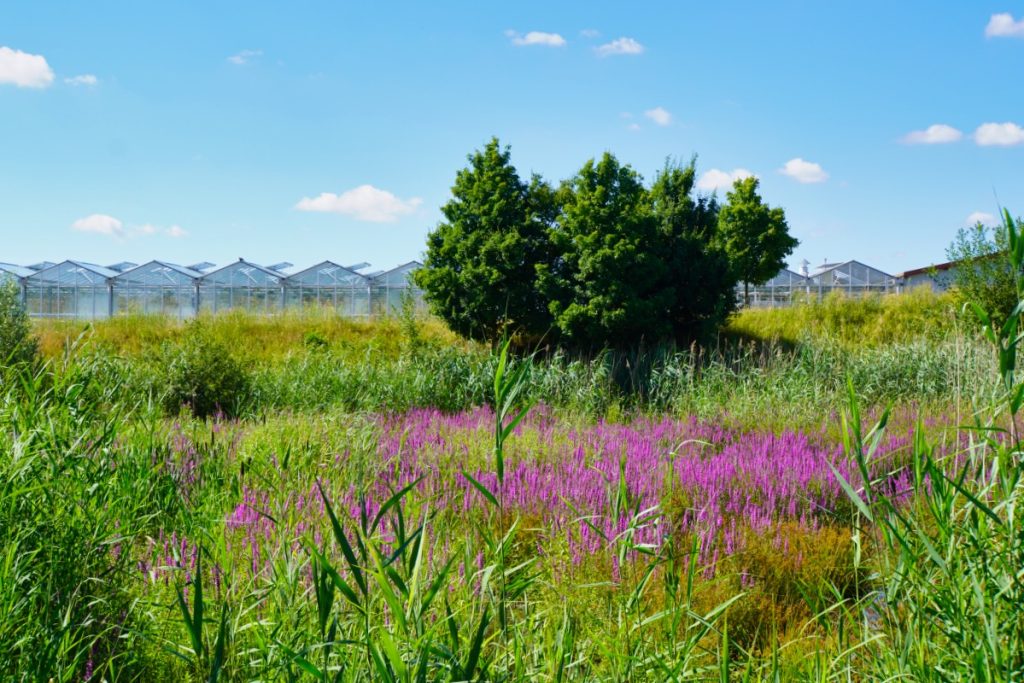
What else is there to see in the Knoblauchsland apart from fields and vegetable cultivation?
If you are cycling in the region, you can cycle to some interesting places.
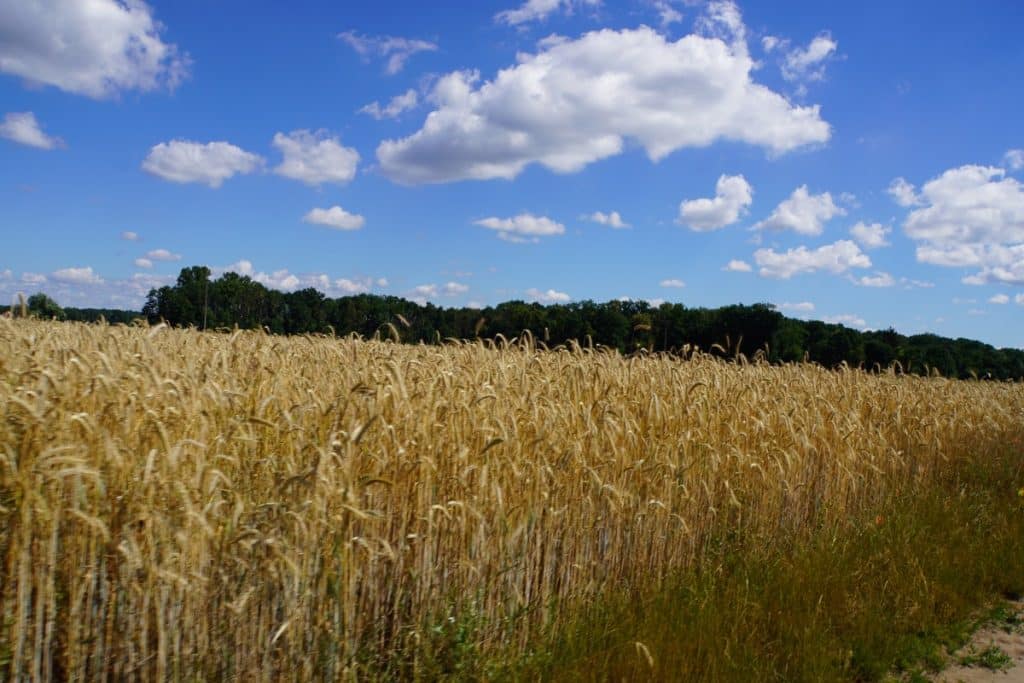
Almoshof
Almoshof is a district of Nuremberg and is located in Knoblauchsland. The district is very village-like and the main attraction is the castle where the Holzschuher family once lived.
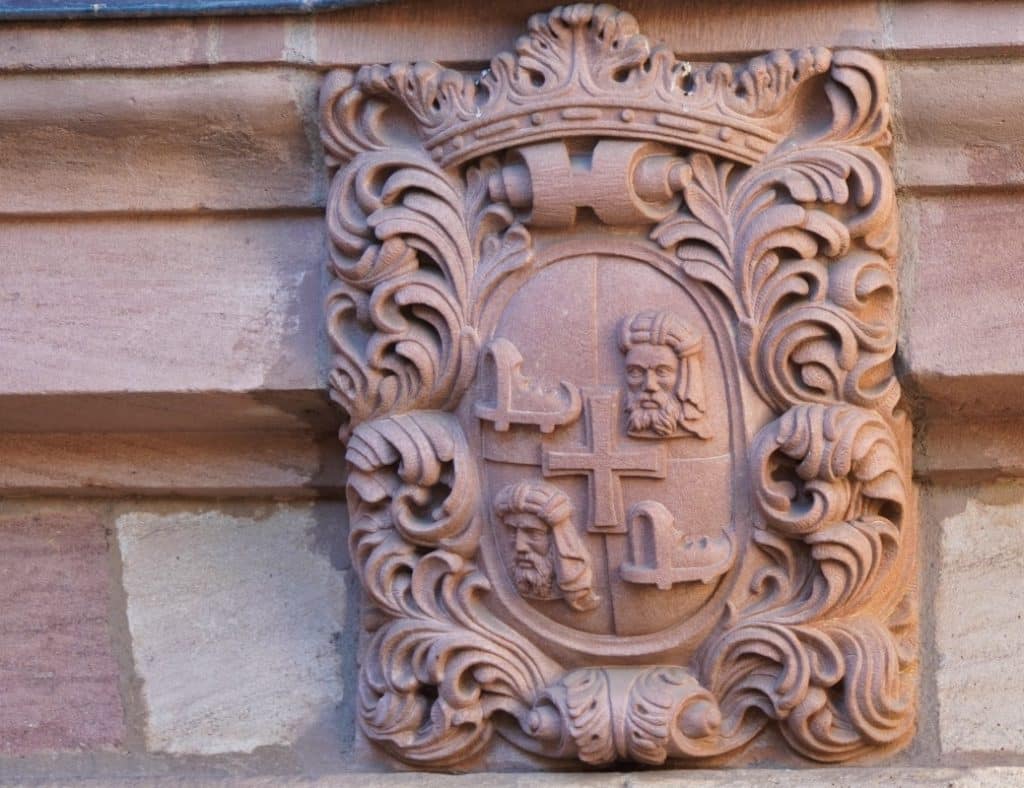
The Nuremberg patrician family Holzschuher built their first manor house in Almoshof as early as the 15th century. This remained in the family until it was sold (to the city of Nuremberg) in 1941. The family coat of arms can still be seen today as a replica above the entrance door.
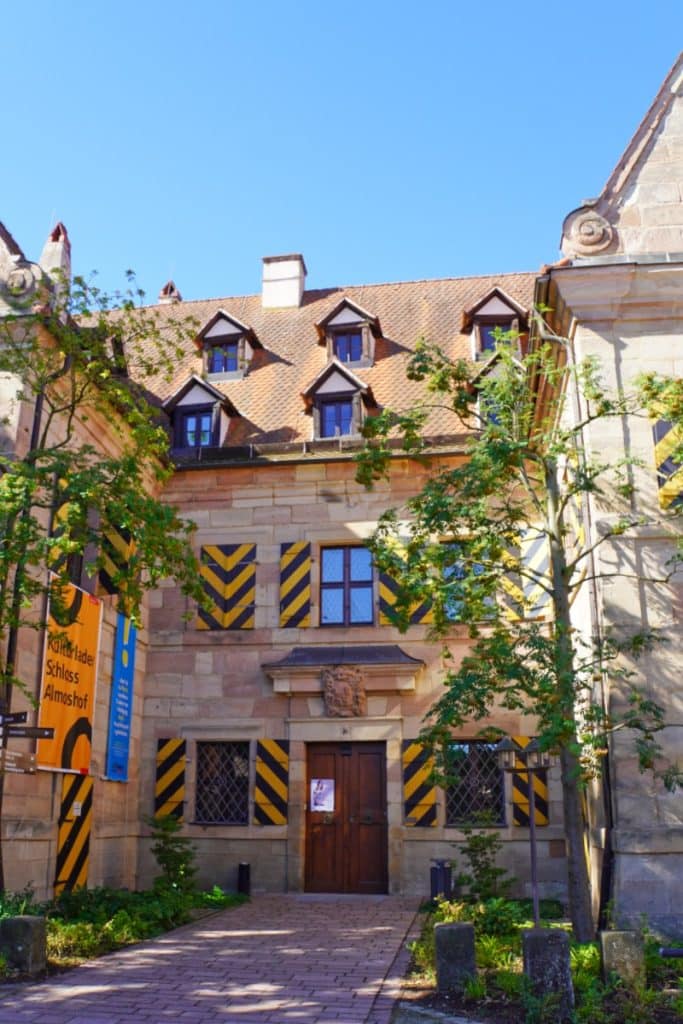
After the sale of the manor house to the city and the end of the Second World War, bombed-out families lived in the house until about 1960. After a 10-year vacancy, Karl-Heinz Hoffmann (Wehrsportgruppe Hoffmann) was given a 25-year lease. In 1975, the city terminated the contract and set up a meeting place in the castle.
Today, the Holzschuh-Schlösschen offers cultural and recreational programmes for residents of the region and visitors.
By bike, we continued on well-maintained paths along a protected green corridor, at the edge of which greenhouses could be seen again and again.
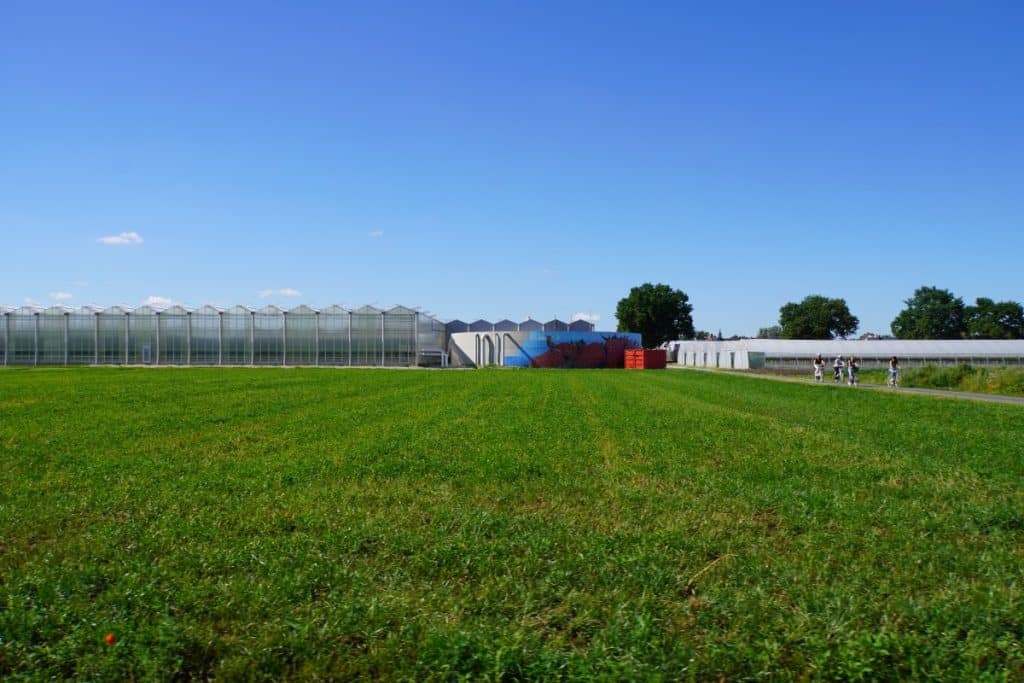
Kraftshof
The small village of Kraftshof in the middle of Knoblauchsland has about 700 inhabitants and is a district of Nuremberg. Agricultural farms and small businesses are located here.
Until the 14th century, the village and the old imperial estate belonged to the Lords of Berg. The patrician family Kreß von Kressenstein built a fortified manor house with a stone manor house here. By granting the right of opening, the city of Nuremberg was able to send city soldiers to the village in times of war. Today, Kraftshof is considered Nuremberg’s oldest fortified outpost.
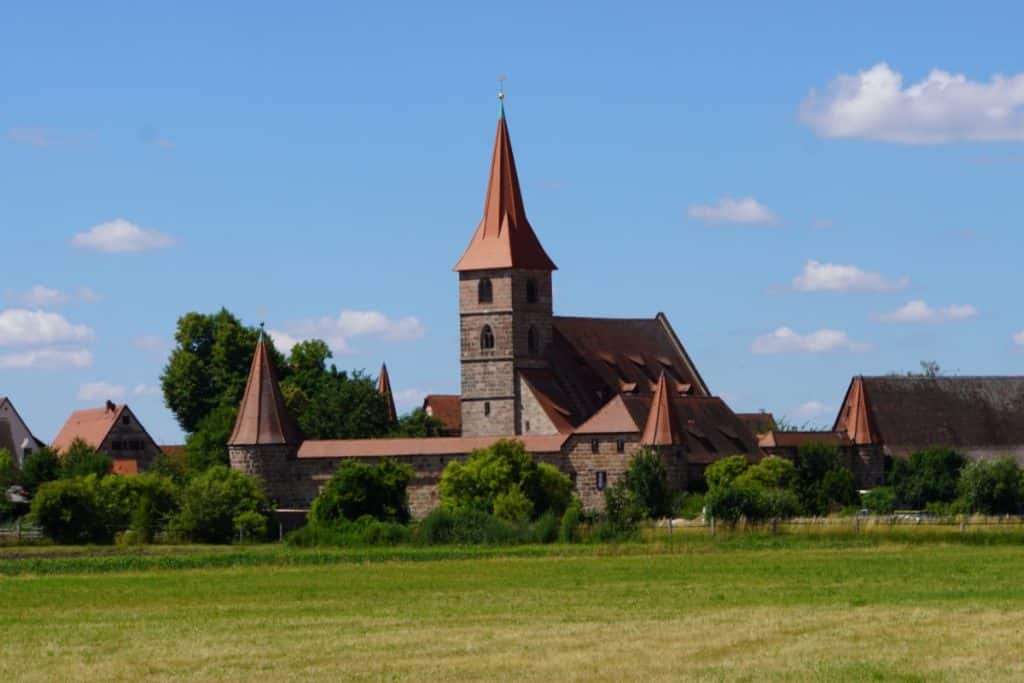
St. George – the fortified church of Kraftshof
Kraftshof has a beautiful fortified church. The first fortified church was built in the village as early as 1305-15 and was later enlarged. The church was damaged during the Second World War and later rebuilt.
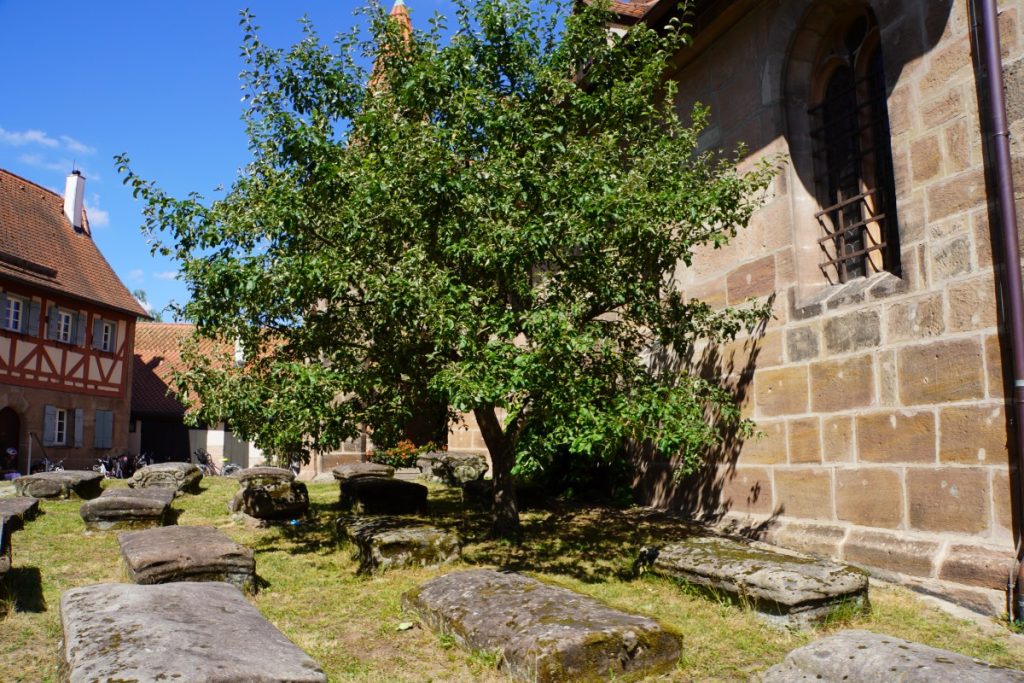
Around the church is an old cemetery with interesting gravestones. These all have the same size of 3×6 work shoe (1 work shoe measured mostly 12 inches = 25-43 cm, sometimes 1⁄2 cubit).
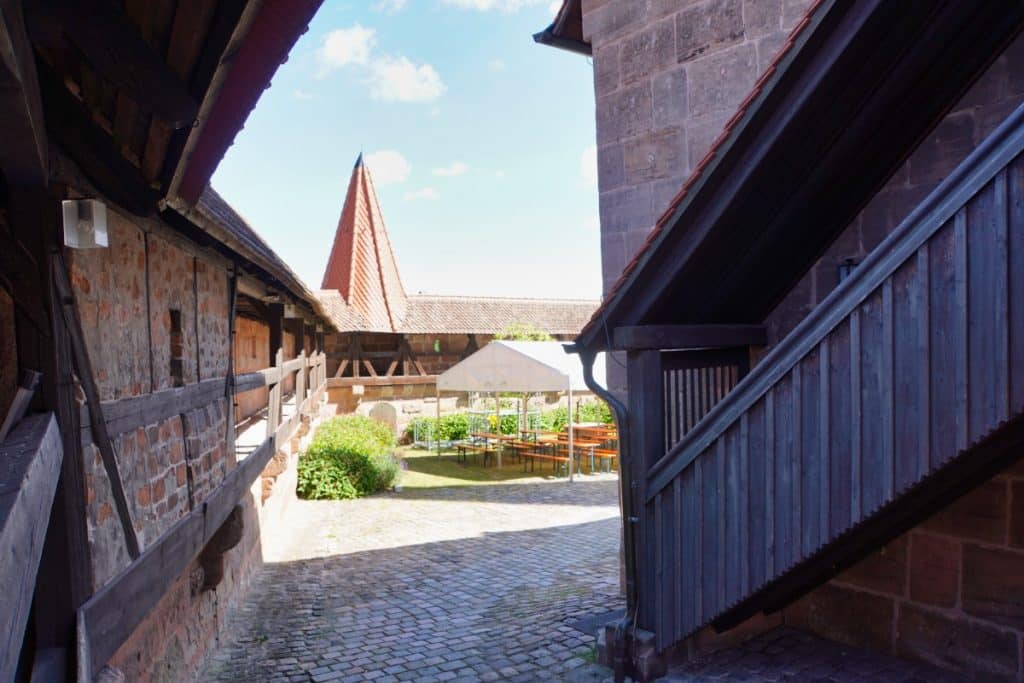
On a part of the church wall there is a covered battlements.
About the Pegnesian Order of Flowers and the Irrhain at Kraftshof
After a few minutes by bike, you reach the Irrhain. This is the meeting place of the Pegnesian Order of Flowers.
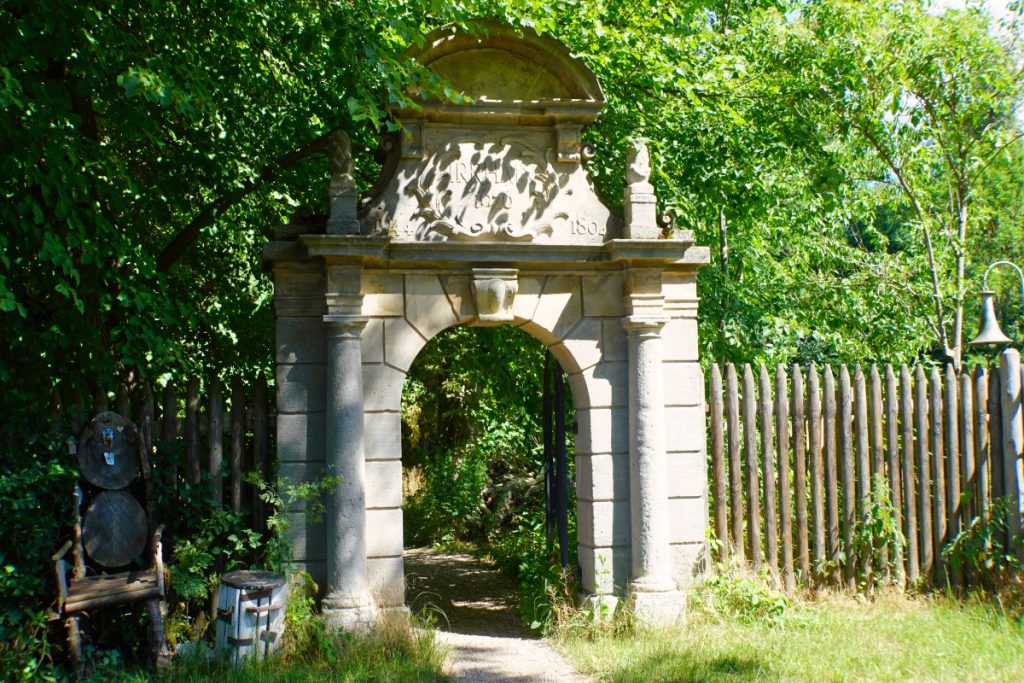
The Pegnesian Order of Flowers was founded in 1644 and is a Nuremberg language society that still exists today. Its founding purpose was to “promote the worship of God and German loyalty, cultivation and improvement of the German language and poetry”.
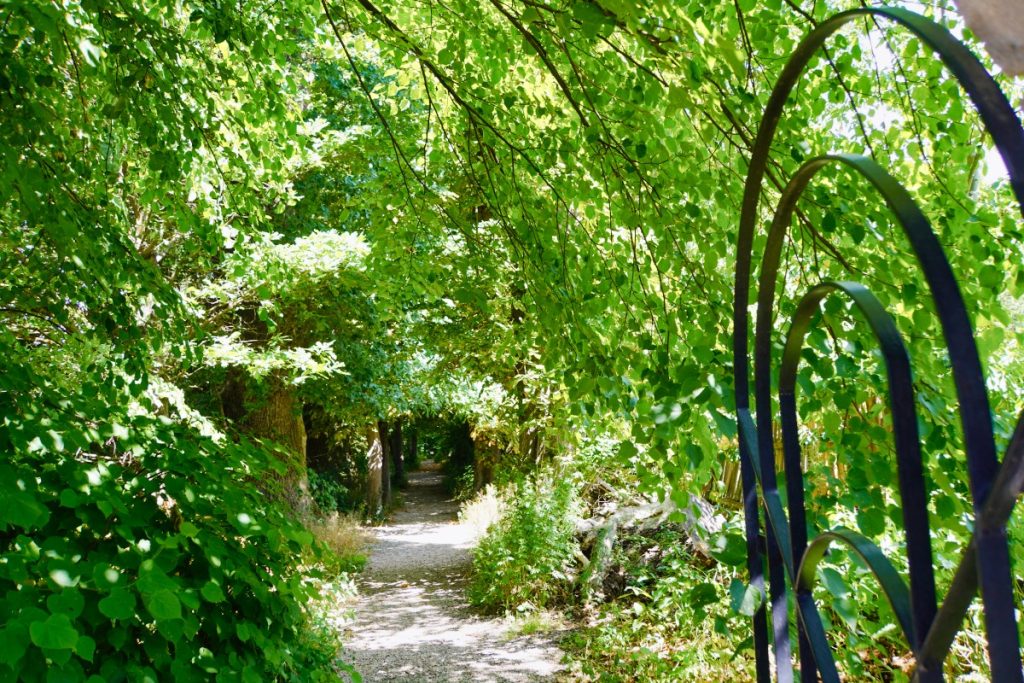
According to the legend told about the founding of the Order, Georg Philipp Harsdörffer and Johann Klaj were each to write a wedding poem for a double wedding in 1644. The better poet was to receive a laurel wreath interwoven with flowers. When they could not decide which poem was the better one and both poets grudged victory to their opponent, they each took a flower out of the wreath.
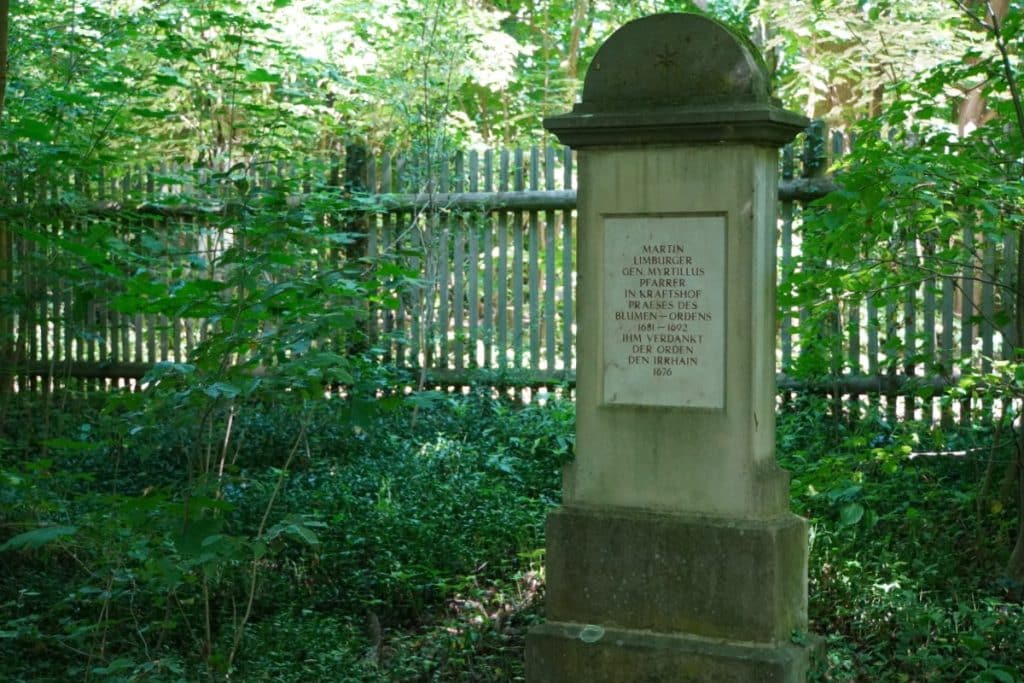
This was the foundation of the Order of Flowers, which many more literary figures and people who enjoyed literature were to join in the course of time. In 1681, the Order was granted the perpetual right to use the Irrhain, a forest similar to a maze. Over time, easy paths were laid out so that it was no longer possible to get lost. The maze contains memorial stones from the 18th and 19th centuries dedicated to members of the order. In addition, there are memorial plaques and, very recently, QR codes on the trees. If you scan them, you can hear literary examples of members of the order.
Restaurant tip in Kraftshof – Alte Post
Before we brought our bikes back to the rental point, there was time for lunch at the Alte Post in Kraftshof. In the beer garden, a lunch made from regional products, of course also from farmers from the Knoblauchsland, awaited us.
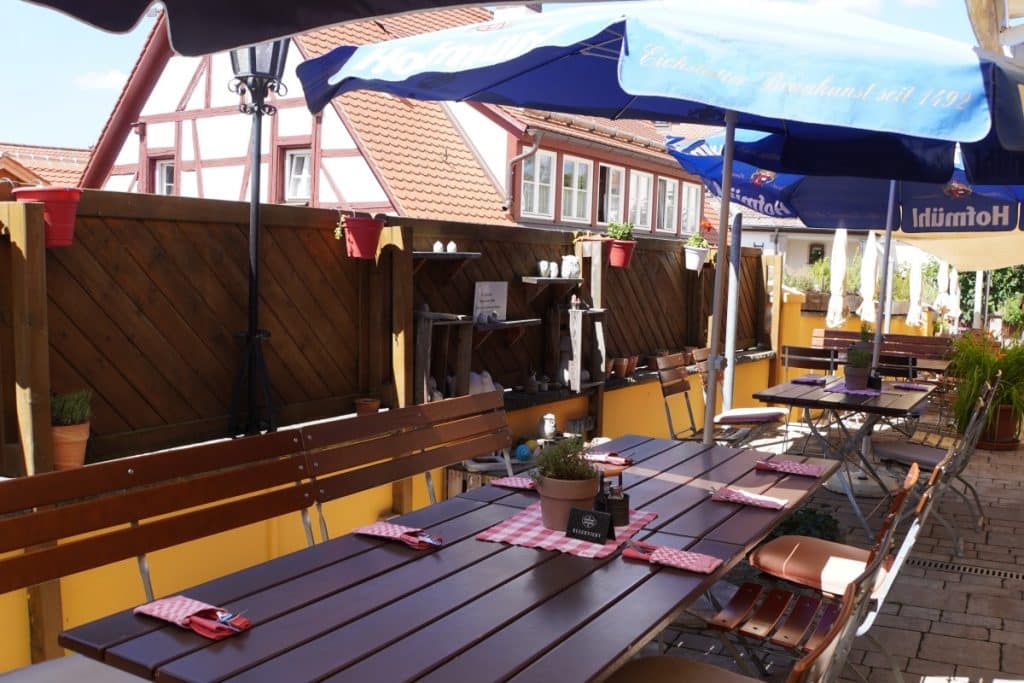
Today, the family tradition of the business is carried on by Thomas Bösl, who learned the basics of cooking at the renowned Rottner Restaurant. He skilfully knows how to give traditional dishes a modern accent.
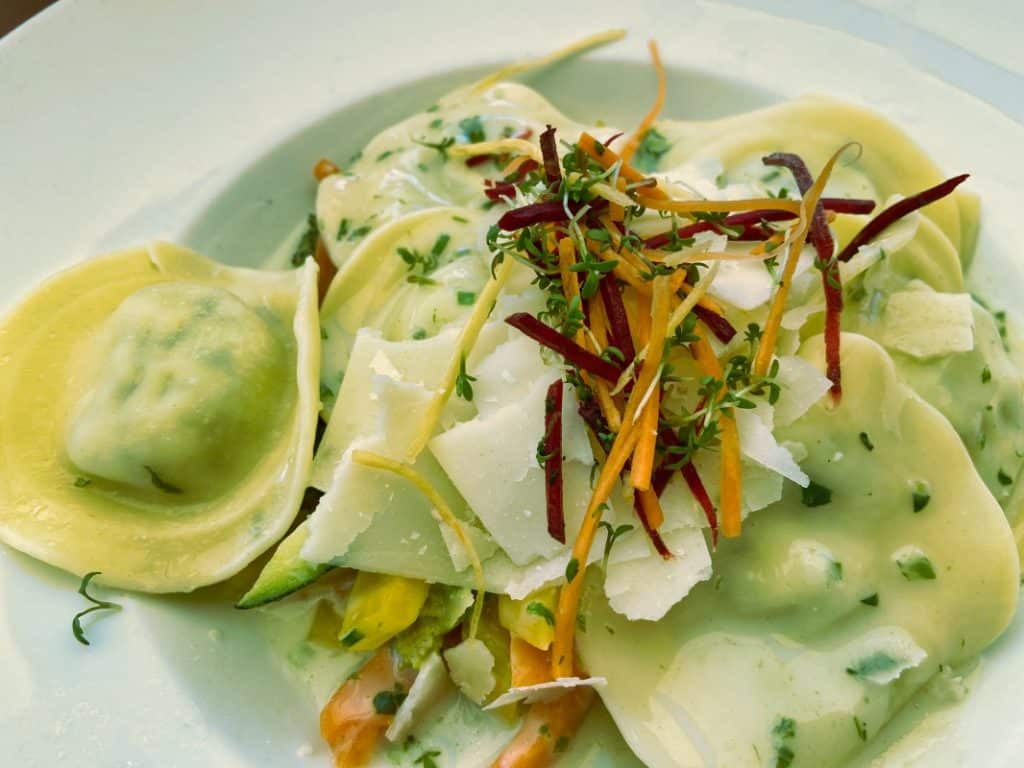
The discovery tour in Knoblauchsland was an item on the programme of a press trip organised by Franken Tourismus and noble kommunikation.
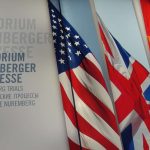

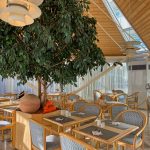


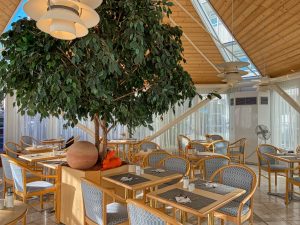
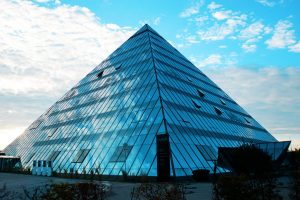
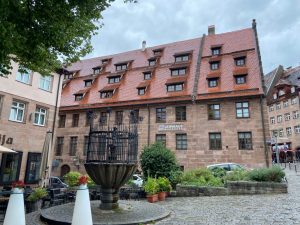
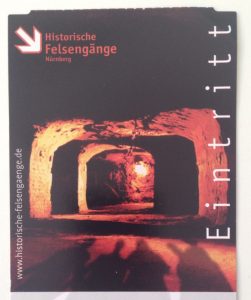
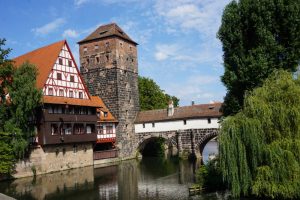
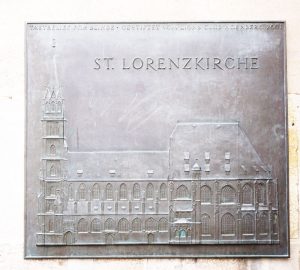
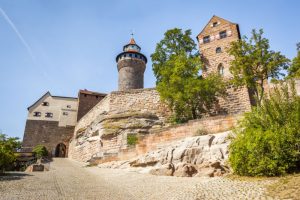
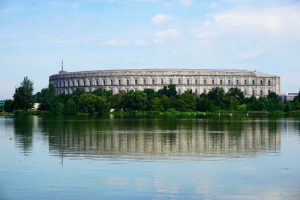
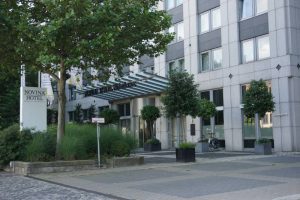
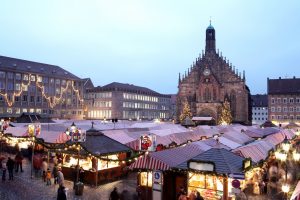
Leave a Reply